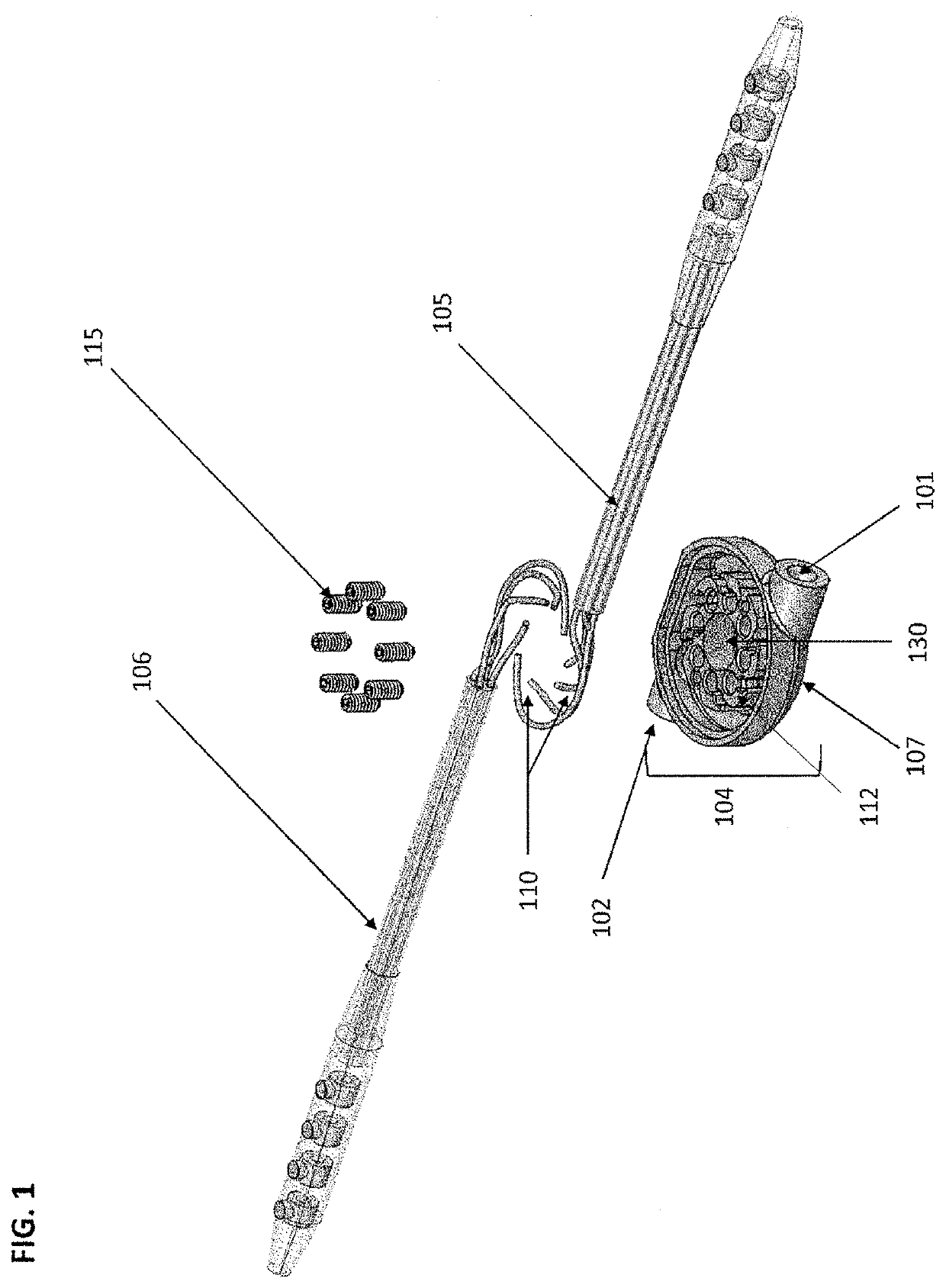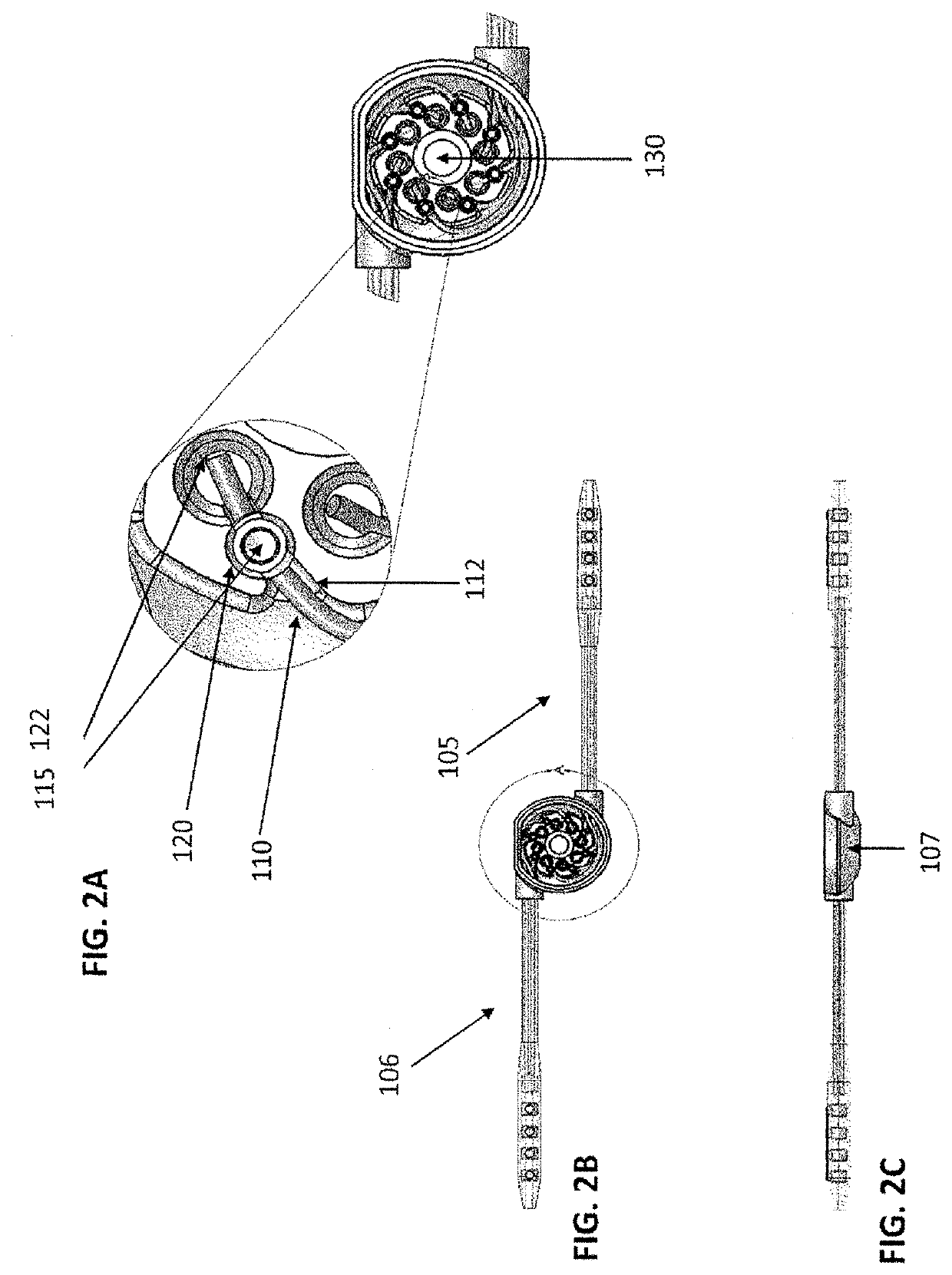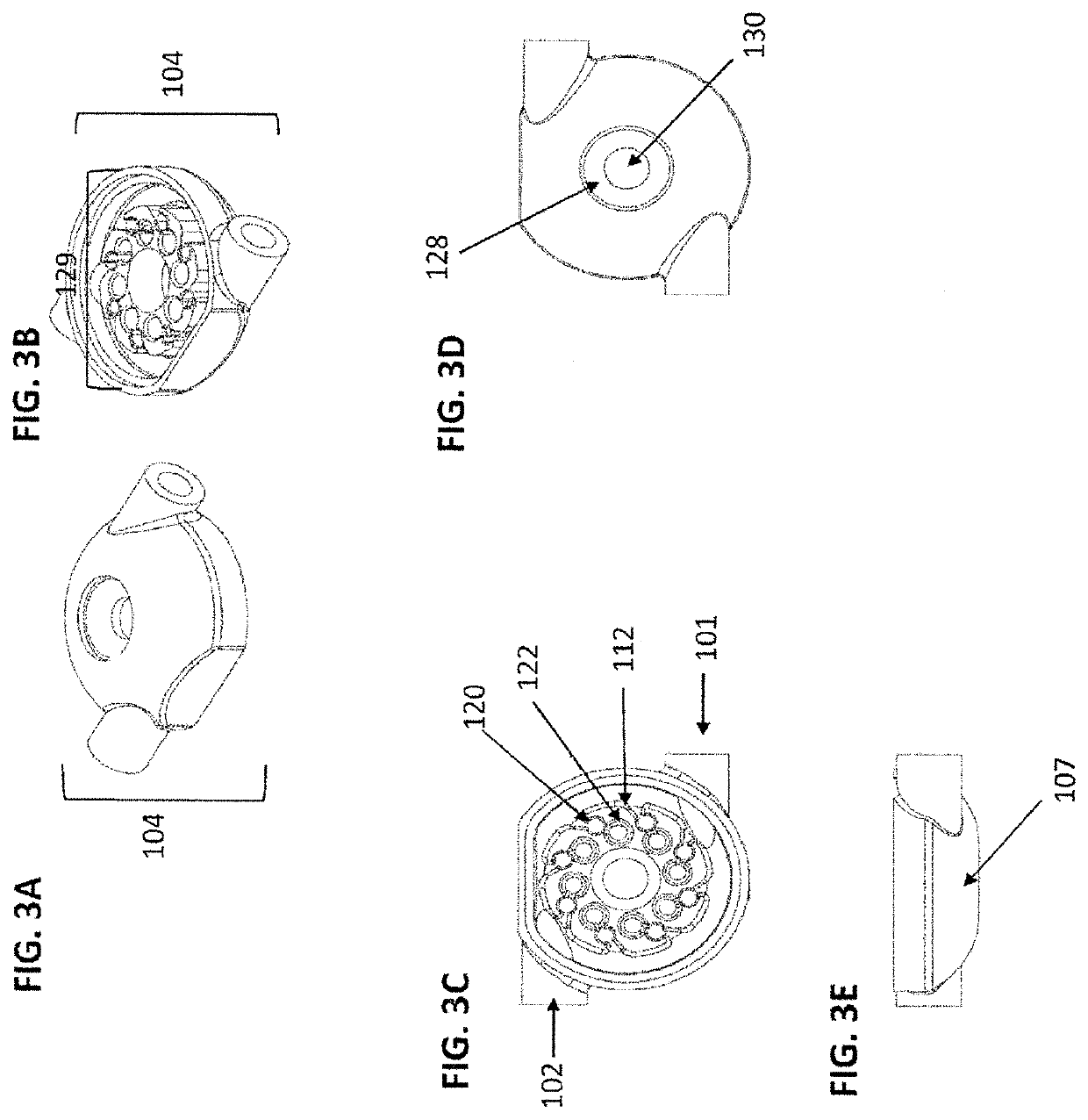Method and System of Dorsal Root Ganglion Stimulation
a dorsal root ganglion and system technology, applied in the field of spinal treatment, can solve the problems of fusion surgery failure, number of spinal cord stimulators failing, difficulty and danger in providing this therapy without open surgical exposur
- Summary
- Abstract
- Description
- Claims
- Application Information
AI Technical Summary
Benefits of technology
Problems solved by technology
Method used
Image
Examples
Embodiment Construction
[0068]A method and system of stimulating the spinal cord, dorsal root ganglion (DRG), or nerve roots, at multiple levels is disclosed. The system is connected to the spinal instrumentation or spine and allows for a minimally-invasive surgery (MIS) trial and connection to an internal pulse generator is described. This system may be used by spine surgeons at the time of spine surgery in cases in which the surgeon considers a high probability of ongoing neuropathic pain following spinal decompression and fusion such as in patients who have had previous spinal surgery at that level.
Method Of DRG Stimulation
[0069]Initial surgical implantation—dorsal root ganglion (DRG) stimulation (with reference to FIG. 15): Optionally, fixation screws such as pedicle screws are used to fix spinal segments into a certain position (step 1). Following placement of screws, the nerve roots and neural foramens are decompressed (step 2). Optionally, the surgeon would secure the rods in place with screw caps (...
PUM
 Login to View More
Login to View More Abstract
Description
Claims
Application Information
 Login to View More
Login to View More - R&D
- Intellectual Property
- Life Sciences
- Materials
- Tech Scout
- Unparalleled Data Quality
- Higher Quality Content
- 60% Fewer Hallucinations
Browse by: Latest US Patents, China's latest patents, Technical Efficacy Thesaurus, Application Domain, Technology Topic, Popular Technical Reports.
© 2025 PatSnap. All rights reserved.Legal|Privacy policy|Modern Slavery Act Transparency Statement|Sitemap|About US| Contact US: help@patsnap.com



